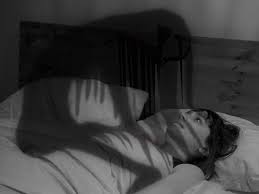Introduction: A Terrifying Awakening
Imagine waking up in the dead of night, unable to move or speak, as an ominous presence lingers in the shadows. You’re trapped, unable to escape, while your mind races with fear. This is the harrowing reality of sleep paralysis, a phenomenon that has plagued humanity for centuries. Join us as we delve into the eerie world of sleep paralysis and explore the dark side of dreams.
1. The Haunting Phenomenon
Sleep paralysis is a state between wakefulness and sleep, where the body is immobilized, and vivid, often terrifying, hallucinations ensue. Many who experience it report the sensation of an evil presence in the room, lurking just out of sight. These encounters can feel so real that they leave a lasting impression on those who experience them.
2. Cross-Cultural Nightmares
Sleep paralysis is not limited to any particular culture or region. Throughout history, people from diverse backgrounds have reported similar experiences. In Japan, it’s known as “kanashibari,” in Newfoundland, it’s the “Old Hag,” and in Mexico, the “subirse el muerto” or “the dead climb on top.” These shared stories add an eerie layer to the phenomenon’s mystery.
3. The Science Behind the Horror
While sleep paralysis has its roots in folklore and superstition, science has provided some insights into its causes. It often occurs during periods of disrupted sleep, stress, or sleep deprivation. Researchers believe that it happens when the body’s sleep cycles are out of sync, leaving the mind awake while the body remains in a state of paralysis to prevent acting out dreams.
4. The Cultural Influence
The terrifying experiences of sleep paralysis have deeply influenced art, literature, and pop culture. It’s a recurring theme in horror films, novels, and paintings, often depicted as malevolent entities sitting on the chest of their helpless victims. This cultural reflection speaks to the universal nature of the phenomenon.
5. Coping with the Unseen Foe
For those who suffer from frequent episodes of sleep paralysis, learning to cope with the terror is essential. Techniques like improving sleep hygiene, reducing stress, and practicing relaxation methods can help minimize the occurrences. Understanding the science behind the phenomenon can also provide a sense of control.
Conclusion: Confronting the Shadows
Sleep paralysis remains a fascinating and chilling mystery, offering a glimpse into the darker corners of the human mind. As science and culture continue to grapple with its complexities, those who’ve experienced it will forever be haunted by the lingering question: Were those apparitions real, or were they merely phantoms of the night, born from the depths of their own subconscious?

